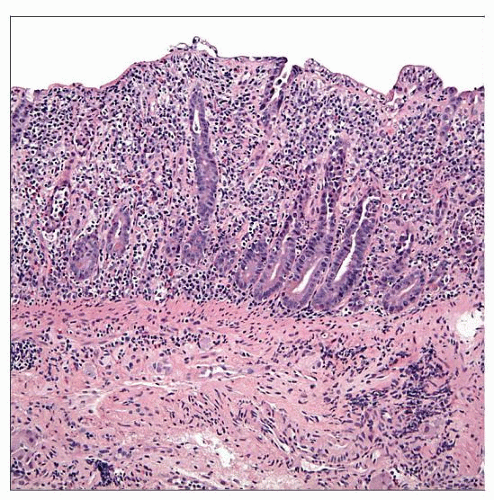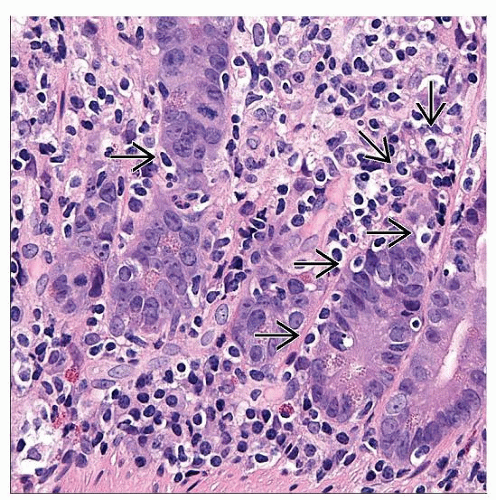Autoimmune Enterocolitis
Joel K. Greenson, MD
Key Facts
Terminology
Rare form of intractable diarrhea secondary to enteropathy associated with autoantibodies
Clinical Issues
Anti-enterocyte antibodies: Indirect immunofluorescence using patients’ serum against normal control small bowel
Anti-goblet cell antibodies seen in some AIE patients
Microscopic Pathology
Marked villous atrophy
Increased lamina propria inflammation
Apoptosis at base of crypts with lymphocytes infiltrating crypt epithelium (but not surface epithelium)
Lack of goblet cells, Paneth cells, &/or endocrine cells (not all cases have this feature)
 Hematoxylin & eosin shows a low-power view of a small bowel with complete villous atrophy and intense inflammation of the lamina propria. |
TERMINOLOGY
Abbreviations
Autoimmune enteropathy (AIE)
Definitions
Rare form of intractable diarrhea secondary to enteropathy, associated with circulating autoantibodies
Most patients also have colonic and gastric involvement
Involvement of pancreas, kidney, and thyroid also reported
ETIOLOGY/PATHOGENESIS
Immune Dysregulation
Childhood form associated with IPEX syndrome (immunodysregulation, polyendocrinopathy, enteropathy, X-linked)
IPEX due to mutation in FOXP3 gene → defective development of CD4(+) CD25(+) regulatory T-cells
Adults may have common variable immunodeficiency or IgA deficiency





